Modern technologies do not stand still. The traditional finishing material is replaced ...
|
|
Each motorist simply dreams of his warm garage. He represents how in ... |
A wide variety of putty mixtures for repair work is presented on sale .... |
How to glue non -hands woven wallpaper
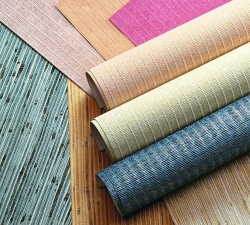
After the decision was made to choose finishing materials for painting, the question remains open how to properly glue non -woven wallpaper on your own? When the repair in the house is nearing completion, the overall impression will depend on the decoration of the walls and the ceiling. If the fabric wallpaper lay unevenly, forming seams, wrinkles and creases, the work will have to be redone or somehow hide defects. To prevent this from happening, it is important to know all the subtleties of this technology, although there is nothing complicated in it.
Table of contents:
- Wnerle wallpaper for painting: Properties
- What glue is used for non -woven?
- Features of the preparation of walls and ceilings for non -woven wallpaper
Wnerle wallpaper for painting: Properties
Today there are many enthusiasts who seek to make the main part of the repair in the house with their own hands. But the modern construction market replaces morally outdated finishing materials and offers new developments. And the fastest of the low costly methods to complete the repair to paste out non -woven wallpaper on the ceiling and walls. This is a roll base of viscose fibers with seals and additives that are produced:
- with a smooth basis;
- with a voluminous pattern;
- textured surface;
- decorative texture.
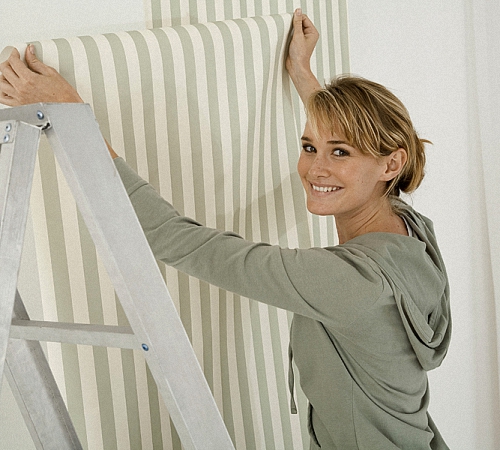
These rolls are an excellent alternative to paper wallpaper, which I require preliminary impregnation with glue. Non -woven non -woven ecologically clean material, durable to break, with excellent fire safety indicators. To the touch they are warmer than paper and vinyl, have a sufficient sound insulation coefficient. Unlike vinyl wallpaper with a pronounced texture, it is not necessary to tear them off the walls and ceiling during subsequent repair. It is enough to apply other paint on top of the primary painting layer and the repair is ready. Repeated painting for a child’s room is especially convenient, where children's arts have to be eliminated much more often than other rooms.
Tip: Before gluing non -woven wallpaper in the nursery, it is worth removing traces of a felt -tip pen or marker so that they do not see through painting.
Another advantage of this variety of finishing materials is a hypoallergenic composition that does not absorb odors. That is why they are preferable to vinyl wallpaper and other building materials on a chemical basis. Such repairs will protect the children's room from harmful chemical components, which are present after any repair in a certain proportion. After painting, it is enough to ventilate the room and immediately settled.
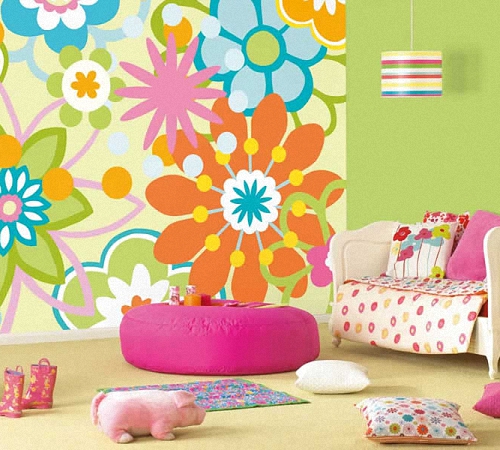
The non -woven base is also used for multilayer vinyl wallpaper to compact the surface layer. But if the pattern is driven out over time, they will no longer be suitable for secondary painting. This non -woven material is also used in light industry for the internal side of outerwear, for the release of oilcloth and other purposes. Wallpaper on this basis is in sufficient demand among professional builders and ordinary consumers. As practice shows, unpretentious non -woven base:
- does not deteriorate;
- does not deform;
- does not absorb odors;
- does not support the combustion process.
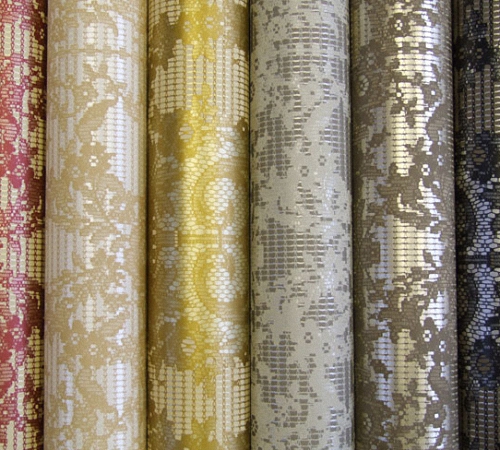
The main technical parameters of woven wallpaper:
- are the ideal basis for painting;
- they are offered in the assortment, with different texture and pattern;
- do not require impregnation, only a wall or ceiling is smeared with glue before pushing non -woven wallpaper;
- low cost relative to another finish
Although the ceiling painting non -woven, as this type of wallpaper is also called for painting, is offered at moderate prices, the cost of rolls or packages may vary markedly. It depends on the:
- multi -layered foundation;
- their varieties;
- manufacturer brands;
- artistic and decorative value of wallpaper.
Attention: many are interested in the question is it possible to poke wallpaper on non -woven wallpaper? Of course, if before that they were reservedly firmly glued during the last repair without wrinkles and defects. But this applies only to rolls without a volumetric texture that can appear through thin paper wallpapers.
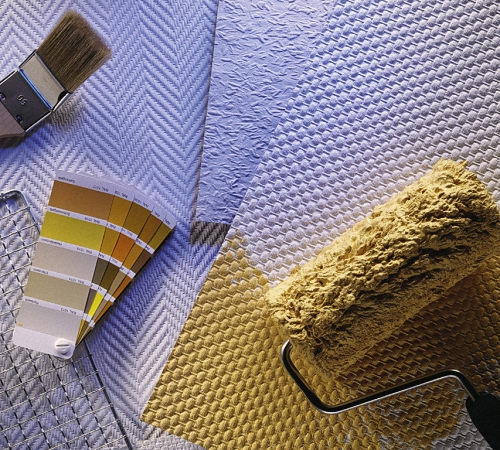
Today, such types of roll materials for painting on a non -woven basis:
- two -layer wallpaper from a tightly compressed substrate and a more loose decorative pattern of finely porous vinyl (spectacular on the ceiling);
- wnerle wallpaper based on viscose fibers, where the pattern is applied with a rolled with a special textured roller
Most often, buyers prefer not smooth rolls, but textured ones:
- with striped ornaments;
- with a relief pattern;
- corrugated;
- with a texture repeating natural materials;
- a certain color, it is possible to use without painting (blue, green, yellow, pink, etc.).
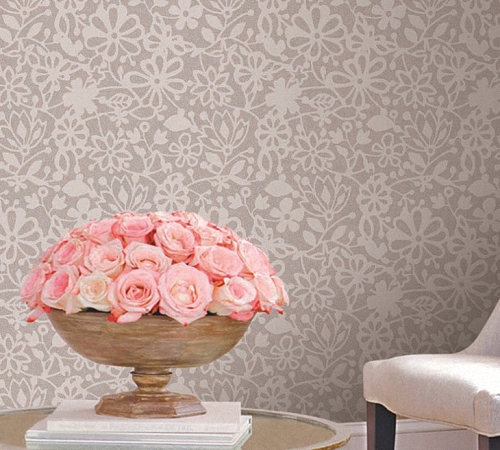
PVC patterned layer, on top of a natural substrate of viscose fibers, often repeats the texture of more expensive finishing materials, this is:
- bamboo;
- cork;
- velvet;
- silk;
- suede leather;
- jacquard fabrics;
- wild stone;
- textured plaster.
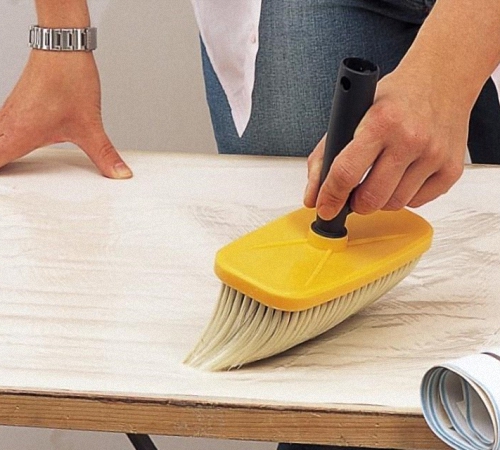
Such a basis often looks expensive, but interior design is much cheaper. The most important thing is not to count with the consumption of rolls. Before gluing the wallpaper of the non -woven meter, it is important to move the area of \u200b\u200bthe treated surface. Wallpaper is bought with a margin, especially if a large drawing is pronounced on them. In this case, the stripes on the rapport (repeating fragment) on rolls will come to adjust. Some wallpapers of imported production are packaged with rolls, others are sold in boxes. In any form of release, it is important to verify the batch number so that the rolls do not differ.
Attention: some textures are suitable for simultaneous pasting for painting walls and ceiling. A large pattern makes it possible to hide microcracks and small ceiling defects. This is more plastic material than fiberglass and paper. Wallpaper wallpapers are not afraid of wall shrinkage, so they are successfully used in new buildings and houses with partial shrinkage. Watch an example of how to glue non -woven wallpaper, video at the end of the article.
What glue is used for non -woven?
For high -quality walling of the walls, it is recommended to use universal glue for wallpaper or specialized composition with non -woven linen cloths. To a greater extent, this applies to vinyl wallpapers on non -woven, where the instructions indicate the brand of glue and the proportion of its preparation.
Glue for the non -woven base is very economical and easy to use. One package or pack is enough to make a high -quality impregnation of a half a standard living room of a multi -apartment building with a typical layout.
Universal glue for such a variety of wallpaper is quite acceptable, especially if you have a couple of packs left from the last repair. Having completed glue one surface from old reserves, you can buy specialized glue for non -woven rolls. The quality of pasting on the outside will not differ. Do not worry about how to glue vinyl wallpaper on a non -woven basis, in the process of gluing, they do not stretch, unlike the paper base. After gluing, they are painted up to 5 times, after each layer they visually slightly lose their expressiveness, due to filling out patterned irregularities in coloring emulsion.
Attention: be sure to ensure that you do not apply too much glue to the wall or ceilings. The liquid composition protruding along the edges must be immediately gently wiped. Cross with glue stems can complicate painting, so at this stage of work it is important to show special accuracy.
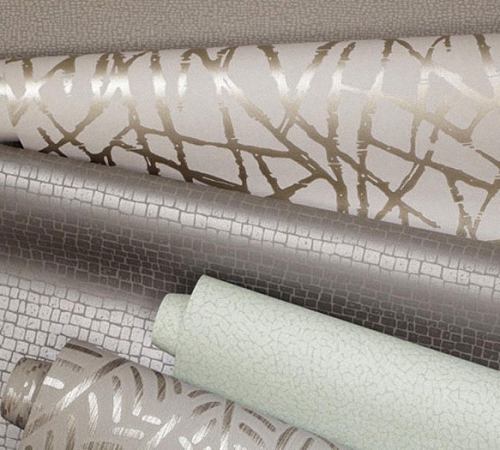
Features of the preparation of walls and ceilings for non -woven wallpaper
After there is confidence that the painting textile for painting was purchased in a sufficient volume, you can proceed to gluing rooms. First, the surface is aligned, since only on a prepared basis will there be a completely aesthetic final result. After the walls, it is undesirable to glue non -woven wallpaper on the ceiling, it is much more convenient to start with the upper plane. After removing the scraps (the edge of the strip at the junction with the wall), remove the remains of the glue and leave to dry for a day. In a day you can continue to work on the walls.
All the irregularities of the walls and ceilings are aligned:
- treated finishing;
- small yamins and holes on reinforced concrete are best sealed with cement mortar or cement -based tile glue;
- the old whitewash is washed off;
- water -based paint should not be washed off thoroughly, it is enough to clean, rinse and let dry;
- the wall of the previously painted wall must be fabbed so that the primer and the canvas of the masking non -woven are better to lie down.
There is nothing complicated in how to glue wallpaper on a non -woven basis, it is important to prepare the base. Old wallpapers, no matter how tight they stay, will have to be removed. When applying glue, they will soak and exfoliate. The seams from stripes of wallpaper that glued overlapping are especially carefully cleaned with a spatula.
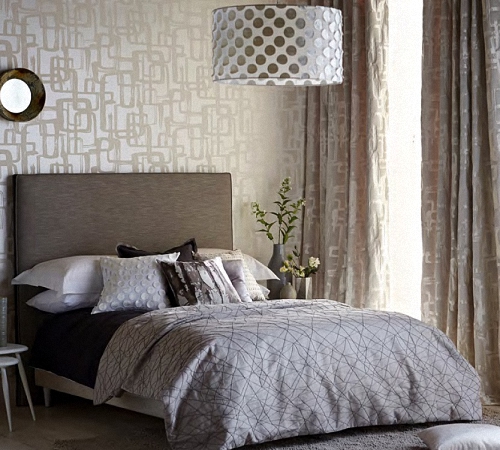
Tip: Wabbed wallpaper is more suitable for pasting the ceilings than paper, which are soaked and torn around the edges with inaccurate circulation. It is much easier to process with glue only the surface of the ceilings and apply a dry roll.
High -quality pasting can only be guaranteed if treated with a primer over a completely dried putty and impregnation with an antifungal composition. It is most convenient to start work from the window, in daylight or high -quality artificial lighting. To begin with, the markings are applied horizontally and vertical, along which the first stripes are glued. This is done using a construction laser, plumb line and level.
Particularly important is the preliminary marking on the walls with a height of more than 3 meters or covering one and a half to two floors:
- duplex apartment;
- two -story private house;
- loft-authorities;
- old buildings with high ceilings.
By vertical marking, you should draw a line with a chalk and a roulette to measure the length of the reference strip of wallpaper. Work begins with the cutting of masking non -woven, which is unfolded on a clean and dry floor, while the glue diluted in the container is prepared and soaked.
The first strip should not be glued to the wall or ceiling, it will serve as the main standard when cutting in order to prevent errors. Rolled materials are usually cut with a sharp knife, but wallpaper on a fabric base can be cut with tailor scissors after marking with a chalk under the ruler.
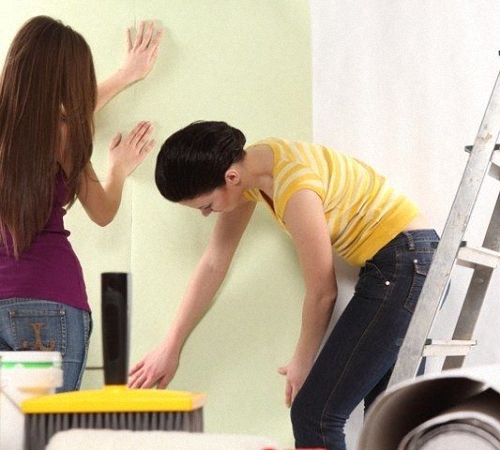
To align the panels, you will need a roller and a wide spatula. The remnants of the glue are most conveniently removed with a soft dry sponge or a soft rag from cotton fabric. On the corners and poorly smeared with glue areas, you can adjust the work with a small brush.
When working with glue on the walls, according to technology, they work in the daytime, turning off the electricity. This is important to do in the first place to remove the switches, as well as to prevent a possible closure when the wiring breaks in places.
Along the vertical line, the glue with a small layer is evenly applied with a roller or a wide painting brush. Ideally, a section of the wall is worked out for one strip so that there are no surpluses and dry areas.
The first strip of wallpaper for painting begins to level the wall from the upper part. It is most convenient to work together so that one carefully adjusts the strip horizontally, the second worked from below, even wallpaper along the vertical line. The glue is easily absorbed, so you have to work quickly and accurately, removing excess through the edges so that they do not protrude on the front surface.
The subsequent stripes will have to be glued to the water, so make sure that there are no overlapping areas that form seams or gaps. These defects immediately spoil the whole impression after painting, and then it will not be possible to eliminate them. After working on one wall is completed, you can relax and evaluate the result.
When the applied wallpapers dried a little, the excess stripes are removed along the edges and once again pass along the walls with a dry roller to remove all air bubbles. Above the outlets and switches of the scissors, you need to carefully cut the holes, trying not to touch the wiring and terminals.
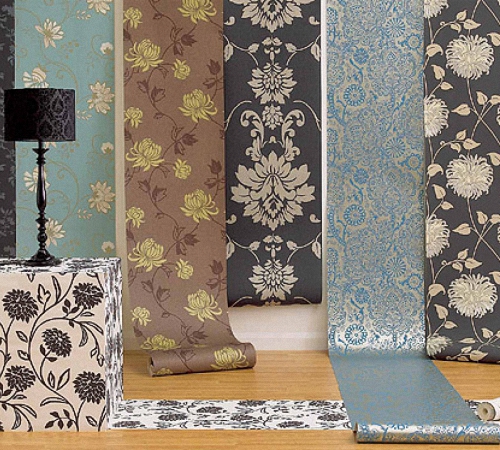
On the ceiling, work is carried out in a similar way along the control line outlined by the construction laser. The glue for work on the ceiling is diluted more thick than for pasting walls, that is, not 10-15% less in proportion of water. It is convenient to work together, standing on a table or stepladder along the marking at a distance. One will led a strip of non -woven, the second to hold the end of the wallpaper.
It is better to glue the pieces of wallpaper across the perimeter of the ceiling, that is, on the shorter side, starting from the window. Upon completion of the work, the wallpaper should completely dry, after which they move to the final stage of painting by water -based emulsion, to which the pigment is added to the desired shade.
Tip: when non -woven wallpaper for painting is applied to a problem ceiling surface, import rolls with a large voluminous pattern are selected, which distracts attention from small defects or low -quality knocking of floor slabs.
About how to glue non -hands with your own hands on the ceiling video:

Great selection of designer
Great selection of designer wallpaper and premium wallpaper http://ledimore.ru/katalog/oboi/sklaskaya-programma.html